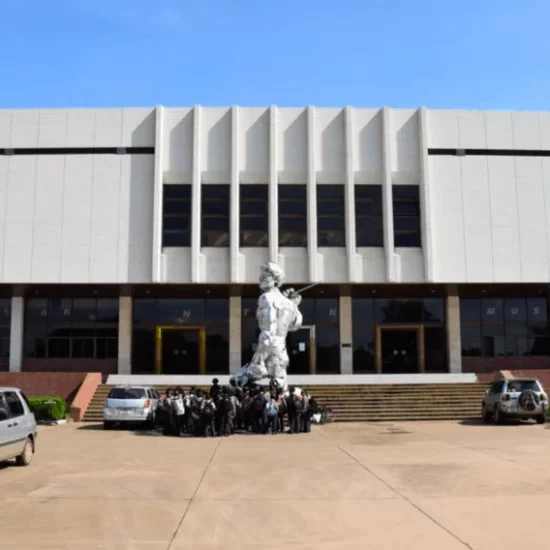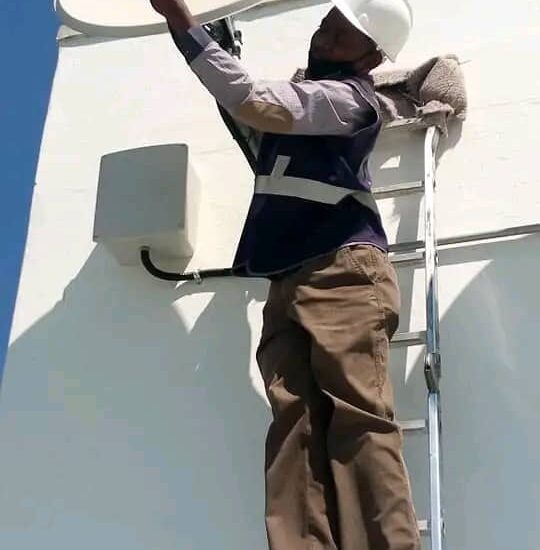By ZBT correspondent
Earlier this year, a law was assented to by President Hichilema that essentially gave space for contributing members of NAPSA to cash in part of their contributions early. The intended outcome is to provide leeway for the members concerned to invest the withdrawn funds before retirement. The terms of the new law were as follows:
- Members who had contributed for at least sixty months or were above 45 years of age were eligible to commute 20% of their cumulative contributions indexed for inflation.
- The withdrawal was a once-off. In other words, after exercising their option on the above amount, the next time they will be able to withdraw funds from NAPSA is when they retire.
As of the date of this piece, it was estimated that some 80,000 members had benefitted from the new scheme of arrangement and some ZMW 3.2 BN had been paid out.
Whilst well intended, the truth is that it is a measure with potential negative consequences not just for NAPSA but for the whole pensions industry in the country – and indeed for important parts of the country’s economy.
At the outset, it must be emphasized that pensions and pension funds are a difficult subject. A very difficult subject! Though their mission is ostensibly simple – to cover people financially when they retire, die or otherwise become infirm and unable to work – the structural features that underlie pension funds are very complex and usually require persons with extremely high aptitudes in mathematical sciences to develop and operate. As such, this piece should in no way be seen as an attempt to offer a panacea for current and likely problems that NAPSA and indeed the pensions industry at large in the country will face.
NAPSA – What is it, how does it operate.
The principles behind NAPSA are not too different to those of any other pension scheme in the world. Essentially pension funds have three functions – to collect contributions from members, pay out benefits to members and invest funds on behalf of members. Financially, a pension fund’s ultimate goal is to stay solvent. The most common measure of solvency in what is known as the actuarial position of a pension fund. Using complex mathematical formulae, future commitments are calculated and they are set against the existing assets of the pension fund as well as expected future asset growth and contributions to establish if the pension fund can meet all its obligations now and in the future. If it cannot, the pension fund is said to have an actuarial deficit. If it can or assets exceed future obligations, it is said to be actuarially sound or have an actuarial surplus.
The precise operational structures of a pension fund are what are known as parameters. This refers collectively to the following:
- What employees and employers are required to pay every month into the fund. In NAPSA’s case, this level is 5% of salary by both the employer and employee or a number equivalent to 10% of the employee’s salary. The maximum contribution that can be paid in a month currently stands at ZMW 1,342 for both the employer and employee or a total of ZMW 2,684.
- The payout requirements once a member qualifies for benefits. In the case of NAPSA, its main product is believed to be an accruable pension upon retirement. It also offers benefits for death and infirmity.
In terms of the cyclical flow of operations, two items are relevant:
- The general principle that applies is that those in employment today pay for those who have already left employment through their contributions. This is known as a Pay As You Go (PAYG) principal. In very simple terms, the young and able-bodied fund the pensions of the old and infirm.
- The application of funds received from contributions generally operates on the modus that contribution receipts primarily pay for member benefits; the second order priority is payment of administrative costs. Any surplus that is left over from payment of benefits and administrative expenses is what is directed towards investments.
Investment is considered very important because it is the element in a pension scheme that protects the value of its assets against inflationary debasement and indeed provides the latitude to adjust benefits upwards when there is an upward rise in inflation.
NAPSA is a very active player in many investment markets in the country and the implications of this viz. a viz. the early withdrawal programme will be discussed below.
EARLY WITHDRAWALS – THE IMPLICATIONS
In terms of the Government’s new scheme, the following apply:
- NAPSA’s is reported to have investment assets with a market value of ZMW 71 BN. Of these, some 69% or +/- ZMW 49 BN are said to be in liquid assets1. This means +/- 6.5% of NAPSA’s liquid assets have had to be shelled out to fund the early withdrawal scheme. Was a reasoned assessment ever carried out to assess whether it was more beneficial to members to keep those funds in an invested position. Taking money out of a GRZ Bond position for instance entails leaving a safe asset that has yields of between 15-25% and potentially putting it in the hands of an unsophisticated individual who will invest it in areas with a limited yield.
- Was an early commutation the best way to go about matters? Wouldn’t it for instance have been better to allow beneficiaries to use the 20% commutable amount as collateral for borrowing? NAPSA itself could have implemented a property loan scheme where the beneficiaries concerned would have been able to borrow money from NAPSA at reasonable interest rates and use the indexed 20% accruable amount as collateral. It is no secret that the property development sector in the country, whilst still very solid, has been historically hamstrung by a lack of affordable long-term debt funding.
- “NAPSA is already facing a significant write down of key assets. Levy Junction was reportedly carried in their books as a USD 300 MN asset. Given the current tenancy profile (visual evidence suggests the building is at least 40% empty) and the general exodus of business from the Lusaka Central Business District (“CBD”), it is not out of the question that as much as USD 200 MN could be shaved from the valuation of Levy Junction. Similar sentiments are being expressed about Edgar Chagwa Lungu (“ECL”) Mall in Kitwe; the USD 40 MN price paid for the building does not reflect anything close to reality in terms of its valuation. A value closer to USD 15 MN has been estimated by reliable industry experts. Based on current exchange rates it is conceivable that as much as USD 25 MN or ZMW 450 MN will have to be shaved off from the value of the ECL Mall.”
“In essence, at current exchange rates, NAPSA is already looking at over ZMW 4 BN in potential investment write-downs from these two positions alone. Others, e.g. the ill-fated Kalulushi Housing Complex, are regarded as white elephants to put it charitably. The fact that the investments that lead to these write-downs were occasioned by political pressure is really a moot point in the bigger scheme of things. The broader question is that, in this type of environment, it does not make sense to withdraw cash funds from NAPSA because NAPSA has a lot of work to recover lost asset value due to bad investment choices.”
- NAPSA is reported to have 900,000 members. Of these, 600,000 are estimated to be active contributing members. It stands to reason that 300,000 members are benefit recipients. These are only estimates obtained from reliable sources and must not be used as guideline numbers. This notwithstanding, the following numbers are relevant and due for consideration:
- If the average national wage is assumed to be ZMW 6,000/month2 and 10% is contributed to NAPSA on average by the 600,000 employees mentioned above, it suggests that ZMW 4.32 BN comes into NAPSA as contribution income every year. Being quite crude about matters, the early withdrawal programme – which is slated to cost NAPSA ZMW 11 BN – will cost the equivalent of contribution income for three full calendar years.
- According to NAPSA, the minimum monthly annuity is legally required to be not less than 20% of the national average wage. Given this reality, ZMW 4.32 BN will also be required to fund annuity payments. Commutable lump sums upon retirement were not possible to estimate reliably as of the date of this article. But, for illustrative purposes, if say 20,000 retirement applications are received every year and ZMW 300,000 on average must be paid out as a retirement lump sum, it is reasonable to assume ZMW 6 BN per annum will be required to payout retirement lump sums.
- All told, NAPSA will probably require ZMW 10.3 BN just to make good on its statutory payouts. Against contribution receipts of ZMW 4.32 BN, this suggests that NAPSA’s cash yields from investment will have to sustain a level above 15% if this payout level is to be sustainable. The returns will likely have to be even higher to generate cash flow for administrative costs. On the other side of the ledger, commitments upon exit will fall as those who shall have commuted their 20% early withdrawal will probably receive lower pension benefits upon retirement.
“These are some quite serious numbers and, though NAPSA may make up the difference with smart investment choices and lower payouts by those that will retire in future years, an actuarial report should be generated very urgently to ascertain just what the financial impact of this programme will be on NAPSA so that contingency measures can be drawn up and be implemented as soon as possible before any negative fallouts become unmanageable.”
“It may for instance be required that monthly contribution rates adjust slightly upwards to account for potential cash pressures that will be brought on by the early withdrawal programme. More directly, the Government can start by putting its own house in order viz. a viz. unpaid contributions. As of 2015, it was estimated that this number stood at ZMW 2.6 BN. Given the tight state of Government finances, there are reasons to believe that the Government has not made good on this amount and in-fact it may have grown.”
The Government can for instance put aside money in the next budget or the next two budgets to settle the amount. If say the amount is ZMW 4 BN, GRZ could put aside ZMW 2 BN over the next two years to clear the balance. This may provide a partial face-saving way of rescuing itself from any negative fallout from the early withdrawal programme.
Another possibility is that the Government could modify the programme slightly without necessarily subtracting from its aims. Rather than giving out the amount as a cash payout, the money could say be put into private investment accounts where members would have full discretion about how to invest their money and not leave it up to administrative structures within NAPSA who often must make investment decisions under the weight of considerable political pressure and not based on the yield or potential yield of an investment.
The private investment account can be drawable for specific purposes. It can for instance be used for making investments in (“LuSE”) listed securities. There is very little doubt that the LuSE is a very moribund at the moment. Trading is very light and as a result asset prices do not reflect “market reality”. Bringing say 30,000 new investors into LuSE securities with a capacity to collectively invest billions on ZMW would not only add to trading activity to the LuSE. It would make it more viable for companies to use the LuSE as an investment vehicle. It is certainly more efficient than the current situation where NAPSA has to go through multiple bureaucratic processes to invest on the LuSE. Why does NAPSA have to invest this money in stocks on behalf of their members? Why can’t the members make those investments themselves? Alternatively, the investment account can be used as collateral for purposes of drawing down debt funding as alluded to above.
- As mentioned above, NAPSA is a very key player in many investment markets in the country. If it is true that ZMW 49 BN of its investment assets are in GRZ Bonds and Treasury Bills, it can safely be assumed that +/- 25%3 of outstanding positions in these two markets combined are owned by NAPSA. This is a significant position and any movement by NAPSA to sell down its positions is likely to move interest rate pricing in this market.
In the likely event that NAPSA is forced to sell down some of its holdings of GRZ Bonds, yields could spike. This is even more so the case when one takes into consideration the fact that many takers for these assets – more than likely international banks and portfolio investors – are likely to demand a high price – aka a big discount to face value – since First World interest rates are very elevated.
Although the current Government has not shown anything like the avaricious appetite for borrowing that its predecessor possessed, there are likely to be many roll overs which will have to be issued at much higher interest rates as a result. It easy to understand how this will have very negative consequences for the Government Budget viz. a viz. interest payments on public debt.
“To conclude, it is far too early to say whether the NAPSA early withdrawal programme will be a blow up for NAPSA. It is very positive in that it is an attempt to give members more control over how their contributions are invested. This is a long overdue step both because the scope for private investment is very limited in the general population and because investment decisions made by NAPSA are often driven by political pressures and not by potential yield.”
“But what is beyond any reasonable doubt is that the programme has been rushed and time should have been taken to think through all the consequences of implementing it. It could also have been better structured to ensure that accruable amounts are actually placed in an invested position and not spent on consumption.”
“But at least a start has been made and it is not too late to tweak the programme slightly to make sure it achieves its intended aims.”






